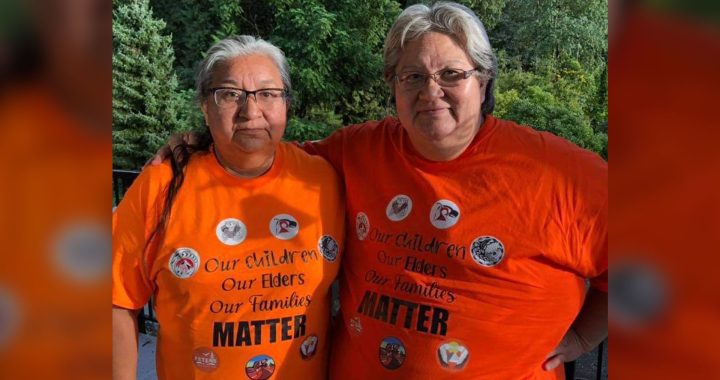The preliminary findings of a new national survey is highlighting how frontline sexual assault organizations are struggling to provide timely services to victims and survivors post-pandemic.
The report, which was conducted by national organization Ending Violence Association of Canada, surveyed more than 100 sexual violence organizations (SVOs) across Canada on how the pandemic impacted those organizations.
It found 83 per cent of the organizations surveyed reported increased or consistently high demand for sexual violence support services compared to pre-pandemic levels.
“This suggests that there were unique impacts of the pandemic for sexual violence survivors, distinct from the impacts on domestic violence typically reported,” a survey brief states. “The deepening complexity of underlying factors that compound the impact of sexualized violence may be contributing to these increases, including lack of affordable housing, unemployment, poor health, deteriorating mental well-being and increasing addictions.”
The survey further noted 76 per cent of SVOs reported increased or consistently high wait times, resulting in even longer delays to access services than before COVID-19.
The longest wait times were for individual and group counselling, with reported waits of six months to a year or longer.
The survey found the pandemic “created or worsened” human resource challenges, and that emergency funding was largely used to address “long-standing under-resourcing rather than increased demand.”
“As emergency funding is coming to an end, the long-standing precarity of the sexual violence sector may be exacerbated further,” it states.
As many SVOs were noted to already be experiencing an increased demand for services prior to the pandemic since the onset of the #MeToo movement, 54 per cent of organization surveyed reported an increase in wait for sexual violence services during the pandemic.
The organizations said high wait times had negative consequences, such as “losing the window of opportunity,” for survivors who reach out to get support.
“Survivors who wait too long on a waitlist may no longer be ready to get support when we finally call – other pressing priorities, emotionally unready, etc. We lose that window of opportunity…,” one respondent said.
The survey also found that COVID-19 impacted SVOs’ employee health and the human resources capacity.
Nearly half of the organizations reported staff taking medical leave for pandemic-related reasons such as stress, burnout, and illness, and 44 per cent said they faced increased challenges in recruiting and retaining qualified staff.
“The results of this landmark survey illustrate the current state of sexual violence services and organizations in Canada, exposing pre-existing funding shortfalls made even more urgent by the stresses of COVID-19,” said Erin Whitmore, executive director of the Ending Violence Association of Canada.
“Local sexual assault centres play a key role in responding to sexualized violence, but without long-term funding post-pandemic they can’t reach underserved communities and meet the intense demand,” she said.
“This is really concerning since emergency funding from COVID will end soon.”
SVOs lacking in northern territories
Aja Mason, executive director of the Yukon Status of Women Council, a non-governmental organization that works to advance gender equity in the territory, said the inequities SVOs face is even more of a problem in the north.
That’s because there are no SVOs in any of the territories.
“Down south in the provinces, provinces have actual centers where folks can go,” she said. “So for example, they often actually accompany the person to the hospital to get a rape kit done or a sexual assault investigation done.”
“We don’t have those spaces in the North,” she said.
While Mason noted Yukon does a Sexualized Assault Response Team (SART), the service is only offered in Whitehorse.
“Like many territories, we see this really big division between the resources that are available in the capital cities, and than the communities outside of the capital city often lack critical and essential services.”
Mason said the lack of SVOs is a major issue in the territories as young girls and women in the North experience four times as much violent crime as the overall population.
Between 2007 and 2017, Indigenous women from the north compromised 34 per cent of female homicide victims in Canada and 76 per cent of young female homicide victims in northern Canada.
Mason said another issues is that decision makers often place statistics before need when it comes to offering services for people experiencing gender-based and sexual violence, resulting in small communities in rural, remote areas being unequipped to offer supports and resources.
“We end up in these situations where folks who need services end up having to either travel, which means you have to have a car , and you need to travel hundreds of kilometers to the closest place like a women’s shelter who can help you access those services,” Mason said.
“You also have to keep in mind that in really small communities (know) everyone. If a community lacks the most essential infrastructure to respond to sexualized violence, they’re not going to report, let alone have access to the basic responses that are required to support them.”
Mason said her organization’s data shows only four per cent of people report gender-based violence.
“We don’t know anything else about the other 96 per cent of people who aren’t reporting,” she said.
“We need to shift towards not relying on individuals to drive the data that’s required to actually distribute the resources that we know help to prevent and respond appropriately to gender-based and sexualized violence.”
Mason said she would like to see decision-makers looking at the issue of SVOs as a “community-level problem,” and that solutions could entail ensuring a SART in every community and having transparent statistics about assaults from policing and government agencies.
“If we’re only valuing the number of people reported in statistics, if that’s what we’re valuing, then we’re just going to continually rebuild systems that are ineffective and aren’t actually addressing the true need of people.”
The final report will be compromised of seven briefing notes that will be released starting next month.
According to Statistics Canada, 46 per cent of Indigenous women in Canada have experienced sexual assault in their lifetime compared to 230 per cent of non-Indigenous women.









